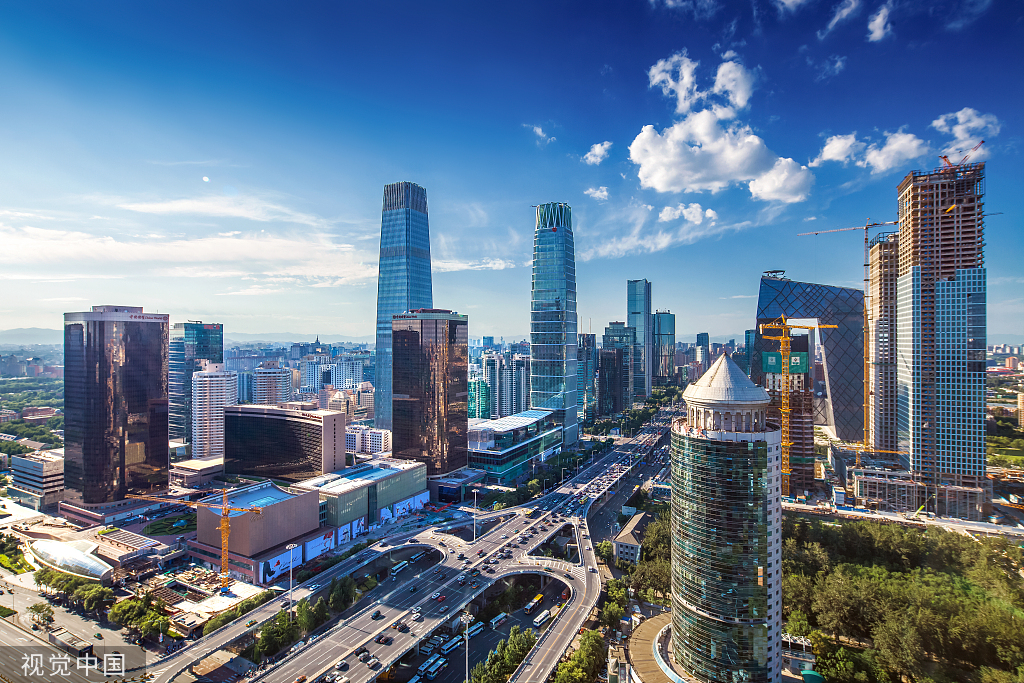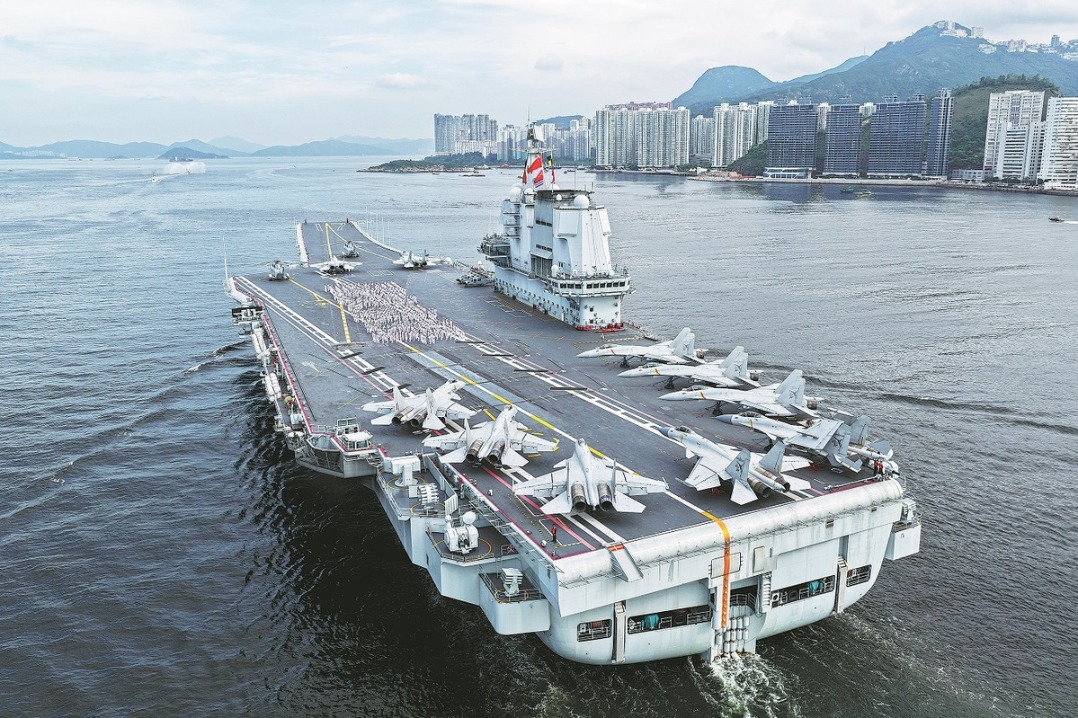Consolidating institutional reform


Reviewing the reform of Party and State institutions at a meeting on July 5, Xi Jinping, general secretary of the Communist Party of China Central Committee, said the reform's achievements should be consolidated and China's system and capacity for governance modernized.
As the country enters a new era of socialism with Chinese characteristics, the less than optimal structure and allocation of functions among Party and State institutions have created problems leading to low efficiency, which have made institutional reforms imperative. But given the complexity and risks involved and the possible profound influence of the reform, the CPC Central Committee has adopted a cautious but proactive approach to the issue.
Coordinating the reform of Party and State institutions
The Third Plenary Session of the 18th CPC Central Committee in November 2013 put forward the task of "coordinating the Party and State institutions' reform and straightening out departments' responsibilities and relationships", while Xi, also China's president, asked the Central Leading Group for Deepening Overall Reform to intensify research on the reform of Party and State institutions in 2015.
The Third Plenary Session of the 19th CPC Central Committee passed the Decision of the CPC Central Committee on Deepening the Reform of the Party and State Institutions and the Plan on Deepening the Reform of the Party and State Institutions in February 2018, which has propelled the comprehensive implementation of the reform. After one and a half years of strenuous efforts, the framework of a system for Party and State institutions' functions which meets the requirements of the new era was basically established.
First, the national governance system and capacity have been comprehensively strengthened thanks to the emphasis on a systematic and holistic approach to strategic reforms. This round of reform is aimed at promoting various reforms in central-and provincial-level institutions and restructuring the leadership, governance, military and mass work systems, as well as strengthening the leadership of the Party, enhancing governments' executive powers, the armed forces' fighting capability, and the vitality of mass organizations.
CPC's centralized, unified leadership strengthened
Tangible results have been achieved thanks to the meticulous work of the central and local governments and different departments. As President Xi said, the functional system that safeguards the centralized and unified CPC leadership has been improved; it is more convenient for the Party and State institutions to perform their duties; the allocation of functions among different institutions is more suited to the requirements of the general strategic layout; an unhindered and vibrant work system covering the central and local governments has been built; reform in the military and civilian fields has been smoothly advanced; and various relevant reforms have been simultaneously carried forward.
Therefore, it can be said that the Party and State institutions system has been optimized, their functional capability enhanced; and problems such as disconnect between power and responsibility, overlapping of responsibilities, and weak supervision have been resolved. Also, China's governance system and capability have modernized.
Second, the CPC's overall leadership, which is the fundamental guarantee for deepening the reform of the Party and State institutions, has been established. Building and improving the Party's leadership mechanism in major works and strengthening the Party institutions' leadership among institutions at the same level are key tasks in this round of reform. Therefore, in the process of the Party and State institutions' reform, as well as the outcomes of the reform, the Party's overall leadership has been effectively strengthened.
New institutions boost the Party's leadership
In the process of reform, meetings at all levels and the work of institutions such as the Central Comprehensively Deepening Reforms Commission have comprehensively carried forward the Party's will. Thanks to the reform, some leading groups at the central level have been upgraded to commissions and new institutions, including the Central Commission for Comprehensive Rule of Law and Central Audit Commission, set up to strengthen the Party's unified and centralized leadership of major work.
The State Administration of Civil Service has been incorporated into the Organization Department of the CPC Central Committee, the State Administration of Radio, Film and Television included in the Publicity Department of the CPC Central Committee, and the State Bureau of Religious Affairs merged into the United Front Work Department of the CPC Central Committee in a bid to transfer relevant administrative functions to the Party institutions to help them better and more directly perform their duties.
Third, the reform of the Party and State institutions has legal safeguards as the rule of law is the basic strategy of socialism with Chinese characteristics. To this end, Xi made it clear that major reforms should be carried out in accordance with law. Consequently, national laws and Party regulations were amended, and the Decision of the Standing Committee of the National People's Congress on Adjustment of Responsibilities of Administrative Departments Concerning Laws and Regulations in the Party and State Institutions Reform was passed on Apr 27, 2018.
Later, the NPC Standing Committee amended more than 40 laws. The Decision on Adjustment of Responsibilities of Administrative Departments Involving Laws and Regulations in the State Council Reform was issued by the State Council, China's Cabinet, on May 24, 2018, and the problem of the legitimacy of restructuring, adjusting responsibility, and managing and enforcing the law before the revision of relevant laws and regulations was solved.
Reform regulations straightened out
Besides, the General Office of the CPC Central Committee has straightened out the Party regulations and relevant documents on the Party and State institutions reform, abolishing three and revising 35 documents. Which has provided the legal and regulatory basis for institutional reform.
And fourth, the Party disciplinary system and national supervision system have been unified. The Decision on Comprehensively Deepening the Party and State Institutions Reform proposed to establish national-, provincial-, municipal-and prefecture-level supervision committees to jointly work with the Party disciplinary organs, in order to unify inner-Party supervision and the supervision of national institutions. And with the establishment of the National Supervisory Commission on March 23, 2018, and the coverage of all civil servants by supervision organs, the anti-corruption battle will be carried forward with greater force.
Despite the smooth implementation of the Party and State institutions' reform in the previous stage, which centered on organizational restructuring and adjustment of functions, much more work requires to be done to fully implement the reform and establish its significance. As Xi said, real "chemical reactions" are needed, as only superficial problems have been solved until now. The Party and State institutions' reform is a systematic project that requires coordination among all sides under the leadership of the CPC.
The author is a professor at the Party School of the CPC Central Committee. The views don't necessarily represent those of China Daily.


































